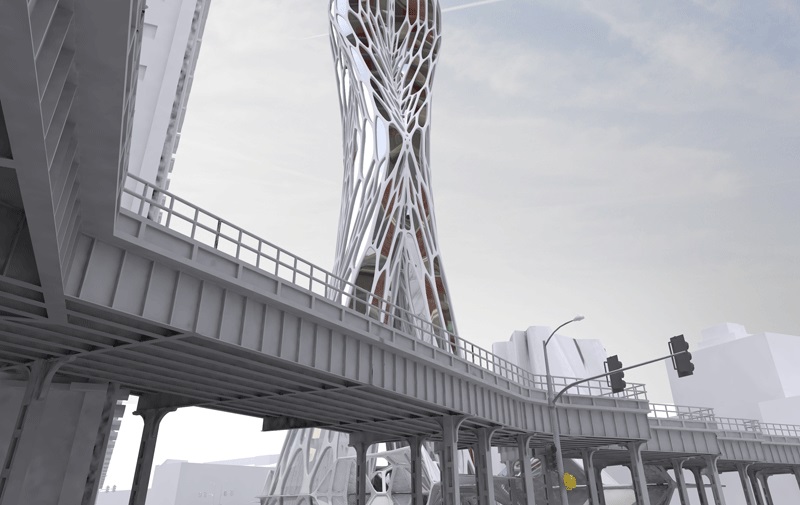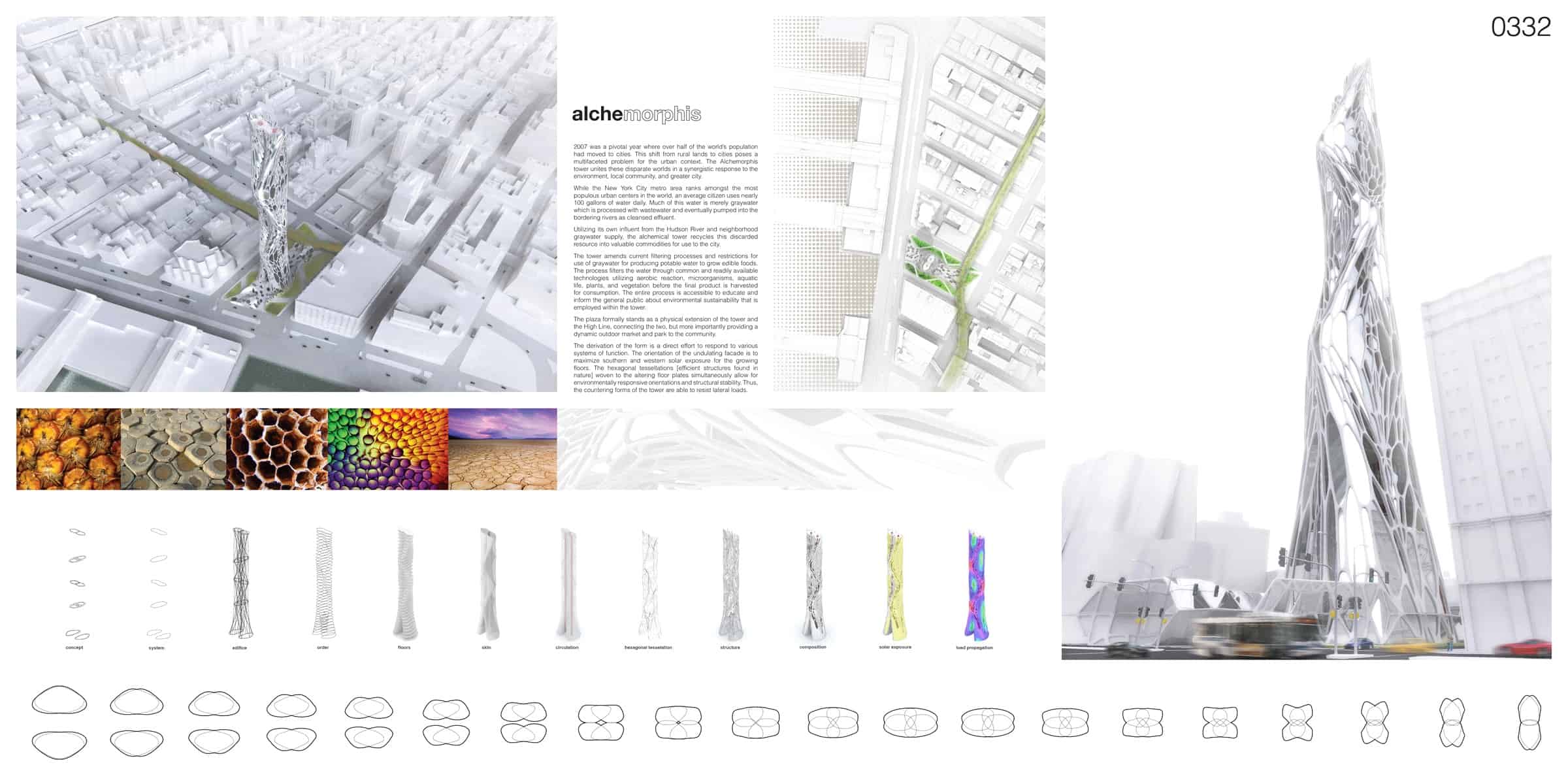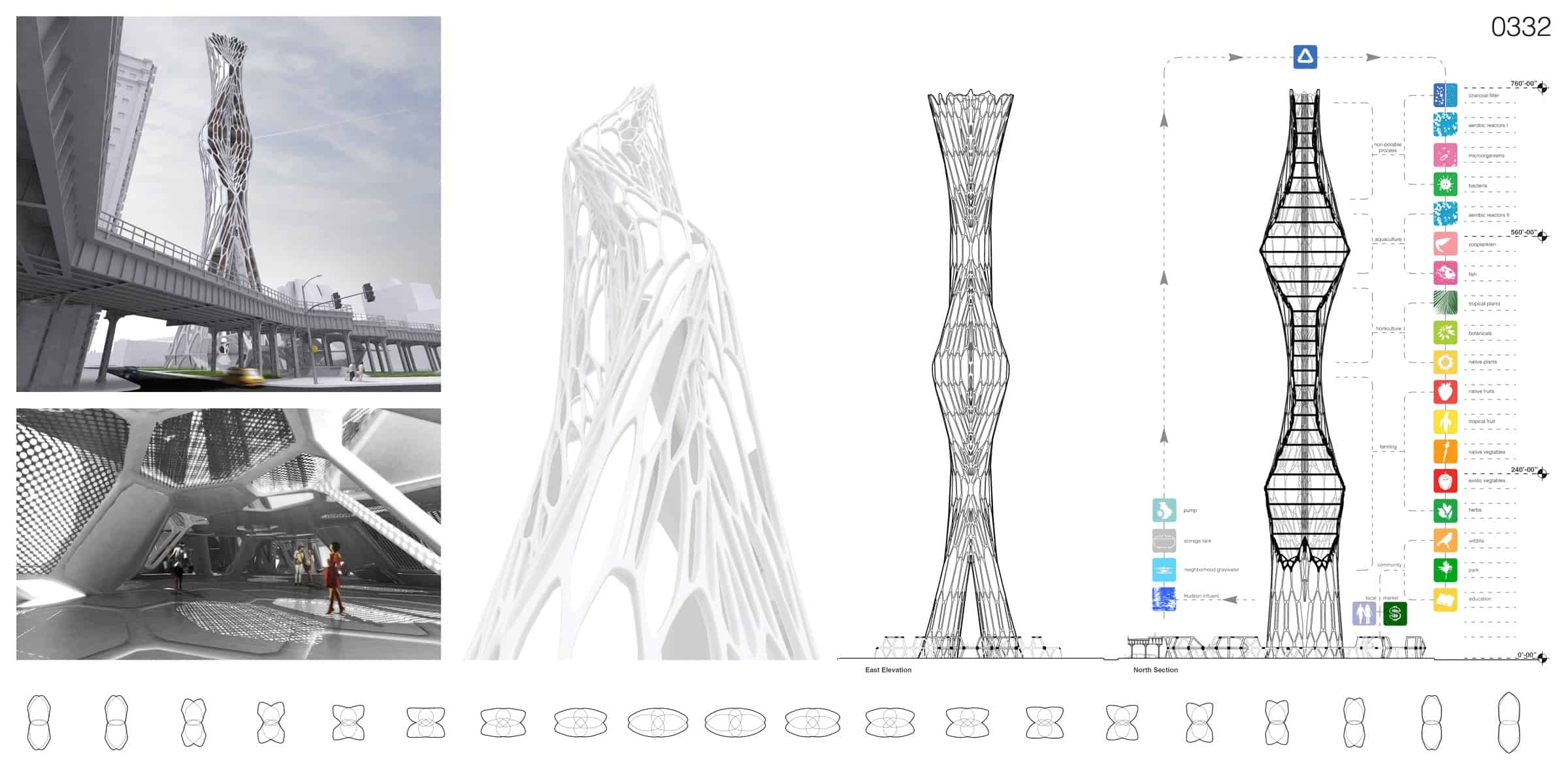Special Mention
2009 Skyscraper Competition
Hoi Wang Chan, Blake Perkins
United States

In 2007 over half of the world’s population had moved to a city. This shift from rural areas to cities poses a multifaceted problem for the urban context. The Alchemorphis tower unites these disparate worlds in a synergistic response to the environment, local community, and greater city.
New York City metro area ranks amongst the most populous urban centers in the world, with its average citizen using nearly 100 gallons of water daily. Much of this water is merely gray water which is processed with wastewater and eventually pumped into the bordering rivers as cleansed effluent. Utilizing its own influent from the Hudson River and neighborhood gray water supply, the alchemical tower recycles this discarded resource into valuable commodities for city use.
The tower amends current filtering processes and restrictions which prohibit the use of gray water for growing edibles. The process filters the water through common and readily available technologies, utilizing aerobic reaction, microorganisms, aquatic life, plants, and vegetation before the final product is harvested for consumption. The plaza resides as a formal and physical extension of the tower and the High Line by connecting the two, but more importantly, it provides a dynamic outdoor market and park to the community.
The derivation of the form is a direct effort to respond to various systems of function. The orientation of the undulating facade is to maximize southern and western solar exposure for the growing floors. The hexagonal tessellations woven to the altering floor plates simultaneously allow for environmentally responsive orientations and structural stability. Thus, the countering forms of the tower are able to resist lateral loads.


This work is licensed under a Creative Commons License permitting non-commercial sharing with attribution. https://creativecommons.org/licenses/by-nc-nd/4.0/



